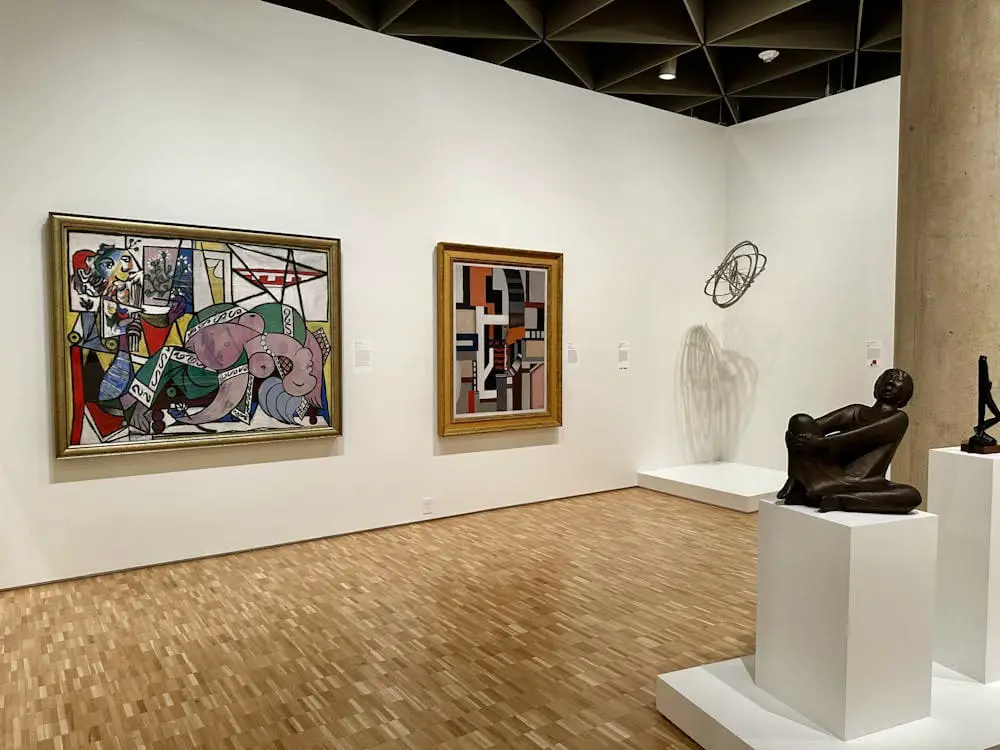In the world of art display and gallery design, the color of the walls can significantly influence the viewer’s perception and interaction with the artworks. Among the various choices, black walls have emerged as a powerful tool to dramatically enhance the viewer’s experience. This article delves into why black has become a favored background in galleries and how it benefits both the art and its audience.
The Psychological Impact of Black Walls
Black, often associated with sophistication and depth, serves as a perfect backdrop that highlights the colors and details of artworks. When used in art galleries, black walls can create a focused and undistracted environment. Viewers find that paintings, sculptures, and installations stand out more vividly against a dark background, allowing each piece to be perceived without interference from surrounding visual noise.
Optimizing Art Visibility
One of the key benefits of using black walls in art galleries is the enhanced visibility of the artwork. Colors appear more vibrant and textures more pronounced when set against black. This is because black absorbs light rather than reflecting it, reducing glare and allowing the viewer to see the true colors and fine details of each piece. This can be particularly effective in photography exhibitions or galleries featuring digital art, where luminance and color accuracy are paramount.
Creating a Dramatic Atmosphere
Black walls contribute to a dramatic and immersive environment that can transform the viewer’s experience. The stark contrast between the artwork and the dark walls often makes the space feel more intimate and personal. This atmosphere encourages viewers to engage more deeply with the art, fostering a connection that might be less palpable in a more neutrally painted space.
Enhancing Thematic Narratives
Many curators choose black walls when they wish to convey a specific thematic narrative. Dark backgrounds can evoke a range of emotions, from solemnity to contemplation, making them ideal for exhibitions that aim to provoke thought or convey powerful messages. For instance, galleries showcasing war photographs or abstract expressions that delve into complex human emotions often benefit from the introspective ambiance that black walls can provide.
Spatial Perception in Art Galleries
The use of black walls also affects the perceived space within a gallery. Contrary to the common belief that dark colors make a space feel smaller, black can actually expand how an area is perceived when used correctly. It can blur the boundaries of the room, giving the impression that the walls recede farther than they do. This illusion of space allows the artwork to stand out even more, giving each piece a kind of visual sovereignty.
Curatorial Considerations
Choosing the right wall color is a critical decision for curators and gallery owners. While black walls offer many advantages, they are best suite for certain types of art or specific exhibitions. It’s important for curators to consider the overall mood they wish to create and how each artwork will interact with the wall color. Lighting also plays a crucial role; with black walls, strategic lighting is essential to ensure that artworks are illuminate without creating unwante reflections or shadows.
Conclusion
Black walls in art galleries are more than just a stylistic choice; they are a curatorial tool that enhances the visual impact and emotional engagement of the artworks displayed. By improving visibility, adding atmospheric depth, and complementing thematic narratives, black backgrounds can transform a simple gallery visit into a profound visual experience.
For galleries considering a redesign or upcoming exhibition, evaluating the use of black as a wall color could be a step towards creating a more impactful and memorable visitor experience. Whether it is to spotlight contemporary art or to create a dialogue between historical pieces, black walls offer a unique canvas that brings art to life.


